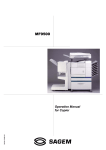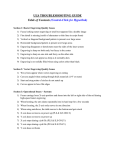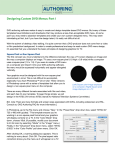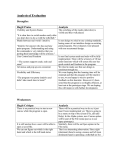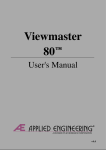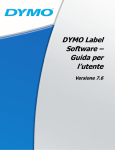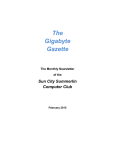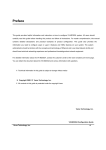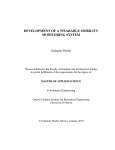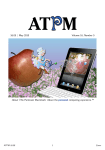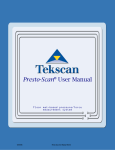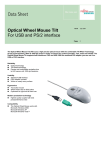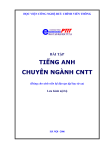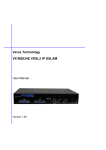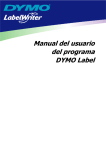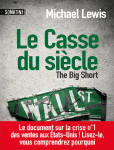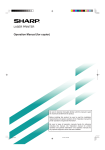Download kerull leu Uy
Transcript
AN INTERACTIVE PICTURE MANIPULATION SYSTEM
by
Daniel Lewis /Franklin
/'
SUBMITTED
IN PARTIAL FULFILLMENT OF THE REQUIREMENTS
FOR THE DEGREES OF
BACHELOR OF SCIENCE
and
MASTER OF SCIENCE
at the
MASSACHUSETTS INSTITUTE OF TECHNOLOGY
1978
September,
..
Signature of Author ...... ... . .-...
Department of Electrical Engineering and
Compute^ Science, August 11, 1978
Certified
by
......
...
.
-
.
_We
11- ; leu Uy
kerull
uy..
..
A;
-1-
I
..
C-mpany
*
V
*v
/
.1.
*
......
.
sor (MIT)
Superv 1is
..................
upervisor (Bell L)
Accepted
.......................
Chairman, Departmental Committee on Graduate Students
ARCHIVES
~ -'.3CH,
UT
, a S 'R'STiUTr.
QC!..
l
JGT
J:~[k~ 3 1 10~j3
L!EARIES
An Interactive Picture Manipulation System
by
Daniel Lewis Franklin
Submitted to the Department of
Electrical Engineering and Computer Science
on August
11, 1978 in partial
fulfillment
of the requirements
for the Degrees of Master of Science and Bachelor of Science
ABSTRACT
A system for manipulating scanned picture files is
described. The system features an interactive language, PIPO,
for quickly and efficiently performing local,
position-invariant operations. There are also commands for
(inter alia) filling in an arbitrary closed curve, translating
a picture file into a file of phototypesetter commands, and
compressing a picture file into a compact format suitable for
long-term storage. The system employs an extensible command
language which permits the user to easily define his own
commands in terms of those already existing. Its modular
design
also aids in the writing
Donald
E. Troxel
of entirely
new commands.
Associate Professor, Dept. of Electrical Engineering
2
ACKNOWLEDGEMENT
I wish to thank my supervisor at Bell Labs, Dr. Peter
Denes, for providing helpful criticism and a guiding hand;
Prof. Troxel, my thesis advisor, for his advice;
Susan
Patterson of Bell Labs, for all her help both during my stay at
Bell and afterwards;
and Gary Madison and Mark Levine,
providing moral and financial support.
for
I also wish to thank
Jerry Roberts of ECD Corp, for allowing me to use ECD's
SMART-ASCII terminal, without which this thesis would probably
still have gotten done, but not without a great deal more pain.
Finally, I thank the Student Information Processing Board of
M.I.T. for funding computer time for the preparation of this
thesis.
This thesis was prepared using the Honeywell Multics
Word-Processing System.
3
CONTENTS
Page
Chapter
I.
Design Goals. ................
*
A. Introduction.............
000.00.
0 0
0
e
0.
.0.....
....
000000000
B. Other Picture Manipulation Systems....
II.
..
...
5
5
0............10
IPMS Structure.....
,..00........0000000..0.0.......
14
A. Introduction....
,0........00.00...0000...000.0..
14
16
B. Overview........
C. The DO and FILL Commands.......................... 20
III. The DO Command ...................... .. 006.
0 0.0.0..
A. Introduction..................... 00000.00..0060.,·
B. Implementation
of the DO Command.
.......... 0
00
C. Reducing I/O Overhead............ .000. *. 0... 0.
D. Extensions
IV.
Screening
to the Language.......
33
34
39
.. ......... . 40
and the FILL Command.......................
A. Introduction
33
44
44
.................................
.....
B. Producing Screened Pictures on the Phototypesetter 50
V.
Conclusions
.
................................... ......
4
56
Chapter
I
Introduction
Computers
have been used to generate
and display
pictures
ever since the first line printer was used to make pinups.
It
is only within the past few years, however, that they have
begun to be employed widely in commercial picture production.
Similarly, typesetters have traditionally been used only to
produce text:
pictures were handled by a combination of
photography and pasteups, and only recently has there been a
move towards processing pictures by computer control of the
typesetters themselves.
An example of this changeover is Yellow Pages directory
production.
directory,
Its long-term
pictures
goal is a system in which the entire
as well as text, is on line and capable
being printed on a CRT phototypesetter
of
in a single pass and
shipped to the printer.
In Yellow Pages production, there are many examples of
picture manipulation carried out by time-consuming photographic
techniques.
picture
The directory customer has a wide variety of
formats at his disposal,
which are prepared
to his
specifications by the telephone company's commercial artists.
These pictures can contain gray areas of several shades.
The
process of adding these areas is referred to as "screening",
since it involves the use of a screen of dots to simulate gray
scale.
Unusual typography is also available.
5
A commercial
artist can be requested
to do custom
lettering,
or a
conventional font can be used with one or more modifications,
such as outlining,
"drop-shadowing"
(adding
shadows to the
letters to make them look like three-dimensional block
letters), and "haloing" (adding haloes around outlines of the
letters).
Although advertisements containing all these features can
theoretically be produced by CRT typesetters, the required
software does not exist.
Hence these operations are currently
performed using photography, manual processing, and pasteups:
a time-consuming process.
To automate this work requires a system capable of the
following:
(1) Scanning and digitizing pictures drawn by a commercial
artist to make the pictures available for computer
processing,
and scaling
will be drawn off-line
them to fit.
for convenience,
(The pictures
and later
digitized using the scanner.)
(2) Performing modifications and additions on those
pictures, including combining them and screening
portions of them.
(3) Generating special lettering.
(4) Producing a file of phototypesetter commands which
reproduces the completed ads.
6
A system meeting these requirements is now under
The system will run on a NOVA 830 16-bit
development.
minicomputer with 48K words running mapped RDOS.
The hardware
includes three Diablo moving head disks, a 9-track tape drive,
a graphics tablet, a Dest Data digital scanner, a 512 x 512
color TV display,
4010 console.
a Versatek
printer/plotter,
To aid in its development,
and a Tektronix
another
system was
needed which would provide an environment suitable for command
development.
hospitable,
The minicomputer itself was not particularly
as it was slow and lacked memory.
for, e.g., drop-shadowing,
in NOVA assembler
was developed,
for efficiency;
Once a command
it could be recoded
but for testing
purposes,
an
environment in which one was not penalized very much for
inefficiency was highly desirable.
The problem,
then, was to develop
picture-processing
operations for a commercial page-layout system, within the
framework of a general interactive picture manipulation system.
The operations to be developed included screening,
drop-shadowing, haloing, and outlining.
The Interactive
Picture Manipulation System (IPMS) was the result.
IPMS is implemented using the following equipment:
1) An SEL 86 computer
(600 nsec memory cycle time) with
40K 32-bit words of core, hardware floating point, and
two fixed head disks;
7
2) A raster-scanned color television display with 512 X
508 picture elements,
stored in a digital
and green video
each up to 4 bits long, and
the red, blue,
refresh memory;
signals are generated
by
automatically
accessing the refresh memory;
capable of scanning
3) A Dest Data scanner-digitizer,
1/2" x 11" black and white picture
digitizing
(no gray scale),
of 240 lines/inch,
at a density
an 8
in about 5
seconds;
4) An 11" x 11" tablet and stylus
1K
x
1K
(Computek
GT50/10)
with
resolution;
5) An alphanumeric
keyboard,
a Tektronix
611 storage
4601 Hard Copy Unit, used as
scope, and a Tektronix
the system console;
6) A PDP-11/45 running MERT/UNIX and attached through
high-speed
system
channels to the SEL 86.
It provides
for the SEL (using several 65 megabyte
head disks) and timesharing
programs
services
to be run on the SEL.
moving
for editing
Only the SEL, however,
operates the interactive displays.
8
a file
IPMS includes a language (PIPO) for describing a wide
class of local, position-invariant picture operations.
As
defined by Rosenfeld,(1) a "position-invariant" picture
is one in which the effect of the operation
operation
point does not depend on its position
i.e., it is a function
not their coordinates.
are thus analogous
signal processing.
the extent
within
only of the values
on a
the picture;
of selected
pixels,
Position-invariant picture functions
in conventional
functions
to time-invariant
A "local" picture function is one which, to
of input pixel values,
that it is a function
only
depends on those within a finite area.
The class of local, position-invariant picture operations
most useful
is a large one, and it includes
operations.
picture-processing
For example, averaging, quantizing, and edge
detection are all local, position invariant operations.
Thus,
a system which provides the ability to specify almost any such
operation
should be quite useful.
The usefulness of PIPO would be limited, however, were it
(A 512 by 512 TV picture contains
not for its high efficiency.
approximately
a quarter of a million
points.
all of them will take 0.15 seconds longer
An operation
for each additional
SEL machine cycle. They add up rather quickly.)
efficiency
could be obtained
_
by programming
__
__
on
Equivalent
the function
in
_
(1) Rosenfeld, A. Picture Processing by Computer, University
of Maryland Computer Science Center Report TR-71, June
1968, Contract
Nonr-5144(00),
9
p. 1-11.
assembler, but such programming would be tedious and anything
but interactive, requiring a complete assemble-link-load cycle
for each change in the program.
required
in order
A complete cycle would also be
to adapt the code for a different
number of
pixels per line (if the code were to be as efficient
as PIPO).
The programming could be made less tedious by using FORTRAN,
but at a great
cost in execution
time.
Furthermore,
a complete
compile-link-load cycle would still be required for changes in
the algorithm.
PIPO avoids these problems by providing a
compile-and-go translator.
The language is simple, and heavily
influenced by the instruction set of the machine, but is still
a great improvement over the alternatives.
Other Picture Manipulation Systems
Graphical
systems can be divided
into two general
types:
those which work in terms of shapes (points, lines, curves,
etc.)
and those which work with scanned pictures (pictures
stored
as a two-dimensional
collection
of points).
Historically, systems which work with scanned pictures have not
offered nearly as many operations as the shape-drawing systems,
nor have they been easy to augment with new operations.
An early example of a picture-generation system is
SKETCHPAD,(1) which permitted the definition of complex line
(1) Sutherland,
I. E.
SKETCHPAD, A Man - Machine Graphical Communication System.
Ph. D. Diss., Dept. of Electrical
Cambridge, Mass. (1963)
10
Engineering,
MIT,
drawings using a light pen and vector CRT display.
once drawn, could be readily replicated.
Objects,
Their shapes could be
made dependent on "constraints," permitting, for example,
demonstrations of lever mechanisms.
limited to line drawings
entered
However, SKETCHPAD was
at the CRT.
More recently, there have been animation systems such as
that of Catmull,(1) which will generate halftone cartoons of
arbitrary complexity from an easily understood set of commands.
Designed for cartoonists with little or no computer experience,
it only manipulates picture features;
picture processing is
not implemented.
There are also a wide range of graphics packages, of which
the most popular is probably GRAFPAC. These provide a library
of subroutines which draw points, lines, circles, etc. on
graphics displays.
Programs using such packages, by their very
nature, are generally
not interactive,
specification of their behavior.
at least regarding
the
Changing their operation
requires programming the appropriate subroutine calls,
recompiling, and reloading.
Furthermore, the host language
(usually FORTRAN) is generally not very well suited for picture
manipulation.
There are also interactive graphics systems designed for
special purposes, such as curve-fitting.
While these perform
(1) Catmull, Edwin. "A System for Computer Generated Movies,"
Proceedings of the Association for Computing Machinery,
August
1972 Annual
Conference,
11
p. 422.
well in their area of intended
use, they are not suited
for
development work.
One example of a picture-processing
system is BUGSYS,(1)
which permits fairly extensive examination and change of
previously
scanned pictures
on a pixel-by-pixel
basis.
It is,
however, difficult to make significant modifications to
selected areas, especially since BUGSYS is not interactive.
there are no facilities
Moreover,
for combining
two or more
pictures.
The XAP system,(2)
developed
of
at the University
Maryland, allows logical and arithmetic operations to be
performed using several previously digitized pictures, but
provides no mechanism for introducing or deleting features of a
picture.
programs
It also is not interactive.
which call the appropriate
Users must write FORTRAN
XAP routines.
It is thus
similar to a subroutine package.
The CIPG system is an interactive facility capable of
operating on several scanned pictures simultaneously, combining
them, scaling them, and performing many other common operations
on them.
New operations,
new commands;
there
however,
is no facility
must be defined
for specifying
by writing
a
(1) Ledley, R. S., et al. "BUGSYS: A Programming System for
Picture Processing - Not for Debugging," Comm. ACM Vol. 9,
p. 79
(1966)
(2) Hayes, Kenneth C., Jr. "XAP User's Manual," Technical
Report #348, Computer Science Center, University of
Maryland.
(1975)
12
picture-processing operation and seeing its behavior
immediately.
Commercial artists can manually erase offending portions
of a picture, crop the picture, superimpose parts of other
pictures on it, draw on it, and generally make drastic changes
to it.
The IPMS is intended
and to provide
to possess the same capabilities
them in a more convenient
photographer's equipment.
13
form than the
Chapter
II
IPMS Structure
Introduction
As discussed
in the previous
chapter,
the picture
processing routines of main interest at the time the system was
begun included the following:
(1) Screening specified areas of a picture.
actually a two-step operation:
be screened,
and converting
This is
specifying the area to
the specification
into an
appropriate file of phototypesetter commands.
(2) Drop-Shadowing -- adding simulated shadows to objects.
In particular,
it was desired
to generate
drop-shadowed characters.
(3) Outlining -- essentially, detecting the edges in
two-level black and white pictures.
both generating
objects,
In order
tracings
and hollowing
to develop
around
This included
the edges of the
out the insides.
the routines
required,
a framework
was
designed in which to carry on the necessary development quickly
and easily.
The framework
had to provide
the ability to run
individual routines whose precise nature could not be foreseen
when the framework was designed -- routines whose arguments
might differ considerably, both from routine to routine and
from call to call of the same routine.
14
A "command
processor"
was called
for;
that is, a routine whose sole job was to
accept user instructions describing routines to be executed,
and execute them in the appropriate environment.
Another requirement of the system was that it facilitate
the "orthogonal
command set" philosophy.
This is the
philosophy of providing a small set of general primitives with
as little overlapping functionality as possible, so that while
a single command might not do very much, most tasks could be
undertaken by combining them in various ways.
Furthermore,
if the primitives
are not sufficient
to
perform a given task, only those additional capabilities needed
to complete
the task must be programmed;
there
is no need to
"re-invent the wheel" for each new application.
This permits
faster development of new processes by encouraging a "building
block" approach to command development, an approach which has
been very successful
on UNIX.(1)
In order to encourage
it,
however, the command processor should provide ways of
"coupling" individual commands.
It must be possible to execute
a series of commands as though they were one command.
Each command may need to communicate information, such as
picture coordinates, to other commands.
should not have to memorize
in.
Ideally,
(1) Ritchie,
System".
Obviously, the user
such information
and type it back
the user should not need to be aware of the
D. M. and Thompson, K. "The UNIX Time-Sharing
Comm. of the ACM Vol. 17, No. 7 (July 1974), pp.
365-375.
15
communication process at all, except when he needs to influence
it.
Yet another requirement
for the system was that it handle
interfacing with the peculiarities of the "outside world" -differing file formats, etc.
Providing clean interfaces to
"dirty" environments permits even the most casually written
command to properly handle them.
This requirement was
especially important in view of the many different file formats
that IPMS was expected
to handle,
and the peculiarities
of its
TV display.
Overview
IPMS consists
of the components
Each of its parts will be discussed
16
diagrammed
in figure
in more detail.
1.
!
I
USER COMMANDS
I
I
I
I
I
I
I
' COMMAND FILES ,
II
, DO COMMAND
_
I
II
I
I
ABBREVIATION FACILITY'
_
_
_
I
I
I
II
II
I
I
..
II~~~
II
~~~
II
I~~~~~~~~~~~~~~~~~~~~~~~~~~~
COMMAND
PROCESSOR
j,
I I .OTHER COMMANDS
~~~~~~~~~~~II
II
~~~~~~~~~~~II
~~~~~~~~~
g
I
I
,, FILL COMMAND
SET COMMANDI
I
__I
I
I
I~~
I
~
~~~
I
I~~ I~~~~
I
I~~
_
I
,
I
t~~~~~~~~~~~~~~~~~~
I
I
I
I
t
I
!
I
I
I_I
II~~~~~
I
I
I
I
I
II
I
I
II
I
II
PICTURE I/O ROUTINES
II
II
I~~~~~~~~~~~~~
I
I
I
BOTTOM-LEVEL I/O ROUTINES
I
I
I
I
TV
CONSOLE
I
I
I
T
'
I
I
PICTURE FILES
,
I
GRAPHIC TABLET:
Figure 1. IPMS Block Diagram
The command processor implements a common, straightforward
command syntax.
of the command,
Each command is specified by giving the name
followed
by its arguments.
The name and
arguments are separated by spaces.
Two facilities
are provided
by the commmand
processor
to
combine elementary commands: command files and an abbreviation
17
facility.
Command
files are just what the name implies:
a file
of commands to be executed.
If IPMS does not recognize the
name of a command,
to see if the user has a file by
that name.
it checks
If so, that file is used for further
though the user had typed its contents.
input, just as
When the file is
finished, IPMS returns to the console for further input.
The abbreviation facility is somewhat more complex.
permits
the user to abbreviate
any command,
It
or part of a
command, or series of commands, by specifying the desired
abbreviation
and the command
abbreviation
can then be used whenever
period
at the beginning
sequence
to the SET command.
desired
of an argument.
argument will be taken as an abbreviation,
be substituted in place of the argument.
abbreviations
are just commands,
by typing
a
The rest of the
and its value will
Because so many
if the abbreviation
name of the command to be executed,
The
no period
is the
is necessary.
The abbreviation facility is also accessible to commands,
which use it to save values of coordinates and other
information
intended
to be invisible
to most users.
It is also
used to keep certain information about pictures used during the
session.
Much of this information -- e.g., abbreviations set up
during a session -- should be saved for the next session with
IPMS.
This ability is provided by the SAVE command.
It writes
out all the information in the form of a series of SET commands
which, when executed, set up the abbreviations, variables, etc.
18
to
have
the
same value
they did when the command was executed.
Since it is just a file of commands,
it is read in by the
command-file facility just like any other command file.
Additionally,
will.
it may be examined
by the user and edited
at
Thus, as much or as little of the IPMS environment
desired may be restored.
as
Note that by using the same facility
-- which is nothing more than the ability to store strings by
name and recall them at will -- for many similar purposes, IPMS
is kept simple.
This simplicity of design provides a high
degree of functionality without requiring excessive memory.
The commands which manipulate picture files are also kept
simple by simplifying the environment in which they do I/O.
IPMS can deal with picture files having
pixel, up to 2048 pixels
from 1-8 bits per
per line, and any number
of lines.
IPMS commands, however, deal only with pictures having 8 bits
per pixel -- that is, one pixel per addressable
storage.
unit of
They obtain their data by calling the picture I/O
routines, which keep track of the actual size of pixels and
pack or unpack them as required.
The size of a pixel,
the
width of a line, and the number of lines must be fed to the
picture
I/O open routine.
centralized;
However,
even this job is
the command processor interprets a special
argument syntax to indicate the name of a picture file to be
opened,
and looks up the format of the picture file in the
"abbreviation" facility.
the command processor
If the format has not been specified,
will interrogate
19
the user for it.
Once
it has been obtained,
the session,
however,
or longer
it is retained
until the end of
if the user saves it and restores
it
later.
One other
handling
important
the TV.
job of the picture
Adjacent
half a frame apart.
I/O routines
is
scan lines in the TV are located
The amount of TV buffer memory needed to
hold one frame varies depending
on the size of a TV pixel,
which can range from 1 to 4 bits.
(Smaller
pixel sizes permit
more than one frame of data to be held in the TV;
commands select the frame displayed.)
separate
Furthermore, if the TV
is set to a pixel size of 3 bits, there aren't even an integral
number of words per scan line!
handled by the picture
All these complications
I/O routines;
are
a simple flag indicates
whether the routines should address the raw file like a TV.
Since the picture I/O routines do not actually "know" whether
they are driving the TV or not, the user can prepare
files ahead of time and display
TV format
them quickly by doing a direct
copy.
The DO and FILL Commands
IPMS presently implements 12 commands "directly" -- that
is, as FORTRAN subroutines.
actually abbreviations.)
been discussed:
minor
TV.
functions
(Several more commands are
Two of these commands have already
SET and SAVE.
Some other commands
perform
such as setting the pixel size or colors of the
These are not important
to understanding
20
IPMS.
However,
the DO and FILL commands
are important
enough
to be described
in some detail.
The first command
is the "DO" command.
It executes
a
specification of a local, position-invariant, picture operation
over a specified
command
is a new picture;
(under normal
The result of the
portion of a picture.
the input picture
circumstances).
is unmodified
The specification
is in a
language called PIPO (for Position Invariant Picture
Operations).
PIPO is described
in detail
in the next chapter;
the following description is meant only as an overview.
PIPO provides a convenient, interactive way of specifying
a large class of local, position-invariant
operations
on a
picture, including arithmetic and logical operations among
pixels, conditional operations, and table lookup.
The PIPO language
was designed
to meet the following
objectives:
(1) It should permit easy, natural
expression
of picture
operations;
(2) It should be compact,
so that it will be easy for
users to specify an operation
at the keyboard;
(3) It should be simple to understand;
(4)
It
should
be
straightforward
to translate
command into very efficient code.
21
a PIPO
The last objective
was particularly
important,
in view of
the tight timing requirements imposed by an interactive system.
Although IPMS does not claim to be a real-time
picture-processing system, typical PIPO commands should not
take more than about
longer
15 seconds to execute or the system
truly interactive.
of a 512x508
But an operation
is no
on all the elements
TV picture must be very fast in order not to take
a long time.
Hence this requirement
had a strong influence
on
the language.
A PIPO command is a specification of a series of
operations to be performed in order to produce an output pixel.
The command
is iterated
over a specified
portion of the
picture, producing one pixel of the new picture with each
iteration.
For operands, a command may use local pixels, constants,
or values in a separate
array.
Use of local pixels
is done
through reference to a matrix whose elements are numbered as
follows:
0,0
0,1
0,2..
1,0
1,1
1,2
...
2,0
2,1
2,2
...
This matrix
is overlaid
on the upper left hand corner of
the picture, and shifted over between each iteration until it
22
has covered the entire picture.
the "current
picture
pixel."
The pixel at position (0,0) is
Its absolute
coordinates
are equal to the coordinates
will result from the iteration.
in the input
of the output
pixel that
In other words, if the
operation copies pixel (0,0) to the output on each iteration,
the new
picture will be identical
to the old.
The IPMS
command to specify this operation is just
DO 0,0
The "DO" command translates its arguments into a PIPO program
and executes
it over the picture.
The pictures
to be used for
input and output, and the portion of each picture
(the
subpicture) actually used, are specified separately.
If (1,1) had been specified
instead,
would have been shifted diagonally
upward
the output
picture
and to the left.
Note that this notation does not permit specification of
translation
down or to the right.
which must refer
consider
Note also that an operation
to pixels to its left or above itself has to
a pixel other than (0,0) to be the "current
The operation
will thus end up translating
left and/or up.
pixel."
the picture
to the
These annoyances are not serious, because IPMS
provides other commands for translating pictures in any
direction.
PIPO commands can also combine several pixels.
To produce
an output picture summing four adjacent input pixels, one
simply says
23
DO 0,0 + 0,1 + 1,0 + 1,1
(Spaces within a PIPO specification are ignored.)
pixel will be the sum of four input pixels.
Each output
the
To divide
result by 4 for scaling purposes, another operator is added on
the end:
DO 0,0 + 0,1 + 1,0 + 1,1 / #4
Note that constants are represented by preceeding them with an
octothorpe
("#").
Note also that PIPO commands
from left to right, rather than according
precedence.
are performed
to algebraic
All of the standard arithmetic and logical
operations are implemented.
As another example,
DO 1,0 - 0,0
implements a simple vertical edge detector.
A more complicated
command,
DO 0,0+0,1+0,2+1,0+1,2+2,0+2,1+2,2
/ #8 - 1,1 * #-2 + 1,1
performs contrast enhancement, by first calculating the average
value of the neighbors
and doubling
original
and negating
value.
expression
this difference,
(1,1) from it
and adding
This is less than a completely
of the algorithm
parentheses.
complexity
of (1,1), then subtracting
it to the
natural
because this version of PIPO lacks
They were not provided because the additional
would not have been sufficiently
24
useful
for the
development of the artistic operations for which IPMS was
intended.
The last kind of value a PIPO operation
externally supplied array value.
can refer to is an
The value calculated so far
is used as an index into the array, with a value of zero
selecting the first element of the array.
each pixel of a picture
For example, to map
into a new value, one simply
says
DO 0,0 T
This simple operation causes the value of pixel (0,0) to be
used as an index into the
array.
The value found in the array
becomes the new current value.
An extension of this technique permits the taking of
histograms by using the increment operator, I:
DO
0,0
The current
I T
value is used as an index into the table,
and the
value found there is incremented.
To set and examine
abbreviation
TABLE.
the table, the user employs the
The value of this abbreviation
is a string
of numbers representing the values of successive elements of
the array.
SET
For example,
TABLE
the commmand
0 2 4 6 8 10
25
sets the first six elements of the table to the specified
numbers.
begins,
The DO command reads the value of TABLE when it
and updates it when it is done.
In order to implement some commercial artists' operations,
another PIPO capability was required:
the ability
to execute
sequences of operations conditionally, based on comparison of
the last calculated value with other values.
Using the conditional
feature of PIPO, one can compare
the
value generated so far with a constant or element of the
matrix, performing some other operation conditionally as a
result.
The C operator
one of the IF operators
is used to perform the comparison,
is used to act on it.
and
For example:
DO 0,0 C 0,1 IF< #0 ELSE #1
This command compares each pixel with its right-hand neighbor;
for each pixel that was less than its neighbor,
picture will contain
number
of commands
to the value
All the commands
upon the IF, until
FI, rarely needed,
it will contain
a 1.
Any
may follow an IF or ELSE, and they may refer
last generated.
are conditional
commands
a 0, otherwise
the output
"closes"
are performed
the normal comparisons
a succeeding
the IF statement
regardless
following
an IF
ELSE or FI.
so that later
of the result of the IF.
are provided;
IF<, IF>, IF=, IF<=, IF>=,
and IF!= (not equal).
With the operators
discussed
so far, it is possible
implement the following operations:
26
All
to
(1) Outlining. This operation consists of drawing lines
around the edges of the picture.
For a
black-and-white picture, this is simply
DO 0,0o0,1 0,2:1,011,212,012,112,2
C#O IF> 1,1 C#O IF= #1 ELSE #0 ELSE
This operation
vertical
ORs together
all the neighbors
bar, "I'", is used to indicate
of them were nonzero,
the center
the center
of (1,1).
logical ORing.)
#0
(The
If any
pixel may be by an edge.
If
pixel is 0, then it is indeed next to an edge, so
put out a white point
(value = 1).
Otherwise
the center
pixel
must be in the middle of white space, so put out a black point
(value = 0).
Figure
lb contains
(2) Edge generation.
an example of this operation.
This operation
produces
a copy of the
input picture with the insides of white areas
"hollowed out."
The technique is to simply check
whether the current pixel is completely surrounded by
white;
DO
if so, it is turned black.
0,0&0,1&0,2&1,0&1,2&2,0&2,1&2,2
The ampersand,
"&", is used to indicate
part of the specification
all the neighbors
no preceeding
comparison
#0 ELSE
logical AND.
1,1
The first
will have a value of 1 if and only if
of (1,1) are
C operator,
IF>
1 (white).
The IF operator
so the IF will behave as though
had been made with zero.
27
has
a
(3) Shadowing. This consists of generating a shadow of the
picture, omitting the picture itself.
the shadow will later be combined,
The picture and
using two separate
colors.
The algorithm simply produces a white pixel
whenever
(1) the current
white pixel is within
direction.
pixel is black, and (2) a
a fixed distance
in a diagonal
The shadow lies along the axis of the
diagonal.
DO 0,0 IF> #0 ELSE
This command
white.
1,112,213,314,415,5
puts out a black pixel whenever
Otherwise,
pixel (0,0) is
it puts out a white pixel if any of the
pixels on the diagonal within five pixels are white.
As simple
as this algorithm may appear, the shadows it produces are quite
acceptable.
See figures
All the DO commands
iteration
d.
given so far have assumed
that one
is done for each and every pixel in the subpicture
being used as input.
otherwise;
dither.
c and
Many picture operations require
sampling algorithms, for example, or ordered
To permit skipping pixels, the DO command looks up the
values of the "abbreviations" DX and DY.
Their values must be
positive
integers.
DX is the horizontal
stepsize;
vertical
stepsize.
They are both normally
one.
command may be used to change their values.
28
DY is the
The SET
The usual use for DX and DY is in displaying
pictures on the TV.
resolution
digitized
These pictures usually have a much higher
than the TV.
Hence,
setting DX and DY to a suitable
value and executing the command
DO 0,0
will display a sampled picture on the TV.
Some operations required more flexibility than that
provided
by the DO command.
In particular,
in order to
implement the screening operation, two new commands were
needed:
(1) A command
to interactively
specify the area to be
screened.
(2) A routine
to convert the picture of the screened
area
into a series of phototypesetter commands.
The easiest way to specify an area to be screened
was
through a closed curve to be filled with screening of a
specified shade.
This was because the picture generally
already contained curves around areas to be screened, and where
it did not, the artist could draw curves
explicitly.
curve would
to indicate
At the console, specifying any point within the
indicate that the entire area should be filled.
specify the point, it was decided
was written
to display
To
that the TV and graphic
tablet would be the most convenient input device.
command
the areas
Hence a
a cursor on the TV and read from
29
the tablet.
obtained
The coordinates
when the user depressed
where
the stylus were stored as the values of abbreviations,
any other command could reference them.
A second command was written to fill an arbitrary
curve with points of a given color.
specification
in, the command
to be followed,
and the color to be filled
the filler.
file containing
an output
generated
Given the user's
the area to be filled, the
of any point within
color of the curve
closed
It
There were several requirements for the fill routine.
had to be reasonably
fast, despite
the fact that individual
scan lines of the picture containing
slow random-access
requiring
it might
device.
main memory
the curve would be on a
The routine
proportional
also had to avoid
to the area to be filled,
be quite large, and the routine would eventually
implemented
as
be
on a minicomputer.
The command
Achieving these requirements took some work.
had to keep track of the portion
of the area already
in.
filled
The simplest way to keep this information was to use the filler
picture being built up.
be able to process
Refinements were necessary in order to
this information
at a reasonable
rate.
The
complete algorithm is described in chapter 4.
Unfortunately, the fill command was not always successful
when applied
to digitized
line drawings.
filled in often had small gaps.
The curve to be
The fill command
could
"escape" through these gaps if they were not eliminated.
solve this problem, a command was added to draw lines at
30
To
specified
places on the picture.
As with the fill command,
the
line command accepted coordinates which were obtained with the
tablet-reading
command.
The user was asked to specify a pair
of points, and a line was drawn between
them.
For convenience,
the command combination accepted any number of pairs of points,
until the user indicated
that he was done by pressing
a switch
on the tablet.
A third command wrote out the picture
in a form suitable
for conversion to phototypesetter code, and another
The
(non-interactive) command did the actual conversion.
conversion was not done immediately because it took much time
and resulted
in a larger set of data than the picture
These commands
are also discussed
in chapter
itself.
4.
IPMS also provided a command-level syntax for combining
pictures.
In its simplest
form, it permitted
a user to replace
any rectangular section of a picture with a rectangular portion
of another
(or the same) picture,
subpicture windows appropriately.
of the subpicture,
simply by setting
the
In addition to replacement
the user could also OR and XOR the two
subpictures together.
This ability turned out to be only
marginally useful in the development of the picture-processing
operations described.
31
Chapter
III
The DO Command
Introduction
The SEL-86 is a 32-bit
32-bit general registers.
immediate,
two forms:
single-address
machine,
with 8
Its instructions generally come in
in which the operand
is a constant
contained in the instruction, and memory reference.
A memory
reference instruction can specify an index register and/or an
indirect address (pointer) chain to be used in address
calculation.
halfword,
It also specifies the size of the operand: byte,
fullword,
immediate,
or doubleword.
add byte, add halfword,
A memory
Thus, there is add
etc.
cycle on SEL-86 is 600 nsec.
immediate instruction takes one cycle;
Each simple
each memory reference
instruction takes one cycle longer than its immediate
counterpart, or longer still if indirect addressing is
specified.
As discussed earlier on page 9, interactive picture
operations of the sort envisioned for IPMS set severe
constraints on execution efficiency and user convenience,
rendering both assembly language and FORTRAN unacceptable.
What was needed was a compile-and-go translator providing the
efficiency of assembly language and the convenience of FORTRAN
(or better).
Such a translator
is provided
command.
32
by the IPMS DO
Implementation of the DO Command
The DO command translates its arguments into SEL machine
code and executes
the result on the picture.
Both the
translation and the resulting code are quite fast;
indeed, the
code produced is nearly as efficient as hand-coded assembler
would be.
The translator achieves this efficiency through a
combination of careful language design and clever
implementation.
The PIPO language
is actually
machine language
of the SEL in many respects;
close to the
in fact, there is
very nearly a one-to-one correspondence between PIPO operators
and the resulting machine instructions.
The translation
process consists of matching the first four characters of the
string (from which all blanks have been removed) against the
list of operators.
Some operators
are shorter than others,
which case less than four characters
actually compared against.
of the input string
in
are
In any event, further action is
dependent on the table entries associated with that operator.
These entries
are (1) the machine
value indicating
instruction
the type of operand,
to be used,
and (3) an optional
(2) a
set
of flags for the operator.
For example,
for the "+"
operator,
the instruction
obtained
would
(1) This
is not the actual name of the instruction
assembler;
be "addbyte"(1)
and its type would be "memref",
in SEL
throughout this discussion, long mnemonic names
will be used rather than the SEL names.
33
meaning
that a matrix
input string.
was expected
reference
in the
to follow
The translator would expect a coordinate
specification of the form "m" or "m,n" which it would translate
into an appropriate offset, indexed by a register which will
later hold the address of the "current
If a constant
pixel."
as the operand
were specified
to the "+"
operator, the table matcher would find a match for "+#", which
would have the instruction "add immediate" and type
"immediate."
would
The translator would expect a number, which it
insert into the instruction.
Note that the "#" is
effectively part of the opcode rather than the operand, a
difference which is invisible to the user.
One operator which requires special assistance is the "/"
operator, which divides the current value by its operand.
that the dividend
SEL requires
be 64 bits long, spread
The
over two
Hence this operator is flagged so that an
registers.
instruction
"extend_sign"
is put out first, extending
the
current value into the adjacent register.
Another group of operators requiring special handling are
the ones that implement
IF operator
actually
conditionals
consists
character condition name.
-- IF, ELSE, and FI.
The
of the "IF" and its one or two
The operator is translated into the
appropriate conditional branch.
However, since this is a
branch forward, the translator does not yet know where it is
branching
to.
So it stacks the location
finds an ELSE or FI, it unstacks
34
of the IF.
the location
When it
and fills it in
with the address of the next instruction.
an unconditional
branch;
point to the location
the location
its (earlier)
ELSE is, of course,
matching
IF is made to
just after the unconditional
of the unconditional
branch
branch, and
s stacked
in place of
that of the IF.
When the end of the specification
checked.
is reached,
If it is not empty, the specified
locations
filled in with the address of the instruction
operator.
are
after the last
This is the behavior that would have occurred anyway
if the specification
FIs.
the stack is
had ended with the appropriate
number of
This default action was chosen to minimize the number of
FIs needed in most operations.
In practice,
it is rare to need
any FIs at all.
The "T" operand also requires special treatment.
operand
refers, not to a constant
This
or a pixel value, but to the
value of an element in a separately
supplied
array.
The
element is chosen on the basis of the current value.
operand
"memref"
is used for table lookup.
operator.
the matrix
It assembles
specification
This
It can be used with any
into the same general
form as
-- that is, an address and an index.
But the address
is the address of the base of the array -- that
is, element
The
current
0.
value.
index register
Thus, the operator
is the register
holding
uses the appropriate
the
value
from the array.
If the translator
characters,
it prefixes
does not recognize
the first few
an "L" to them and tries again.
35
If the
first few characters
specify a coordinate,
action will generate
a match to the "L" operator
which generates a load instruction.
value
specified
is loaded for use.
were a constant,
"#34",
found. It generates
such as "0,0",
this
in the table,
This is how the first
If the first few characters
for example,
the "L#" operator
a "loadimmediate"
instruction,
would be
just like
the other immediate instructions.
Before beginning
translation,
sequences are put out.
execution;
register
beginning
and after it is over, fixed
The prefix sequence starts loop
the suffix sequence
all the operators
stores the value left in the
use, and branches
back to the
if the loop has not yet been executed
the specified
number of times.
Here is an example.
The IPMS command
DO 0,0+#1
is translated
loop
into the loop
copy_reg
rO,r5
load im
r2,-<number
load
add im
rl,<addrl>,r3
rl,1
store
add_im
inc_br
return
rl,<addr2>,r2
r3,<stepsize>
r2,loop
of iterations>
The two instructions
preceeding
loop for execution.
Strictly speaking, the copy is
unnecessary;
it is provided
the label "loop" set up the
as a matter
36
of convenience
for the
calling routine.
The load immediate initializes register 2
with the negative
(two's complement)
of the number of
iterations, which is inserted in the instruction before
execution.
The loop is then executed.
current value.
1 holds
the
The store instruction outputs the current value
into the appropriate
output
the input array, register
loop.
Register
pixel.
Then the index register
3, is bumped by the "stepsize"
for
of the
This is the size of the "step" the virtual matrix takes
between
iterations
Finally,
register
-- that is, the value of DX (see chapter
2 is incremented,
2).
and if it is not yet zero,
control is returned to the location labeled "loop."
This sequence takes 7 cycles per iteration, for a total
time of 1.1 seconds when run on a 512x508
picture.
The entire
command actually takes over twice as long, because of time
spent reading and writing
the TV buffer.
If the command
were
instead run on a disk file, it would take even longer.
Table
1 summarizes
the operators
in the PIPO language
and
their possible operands.
Reducing I/O Overhead
The description above has oversimplified the translation
task somewhat.
coordinates.
There
is no limit to the size of the matrix
A DO command like "DO 0,0+1,0" requires only one
input scan line, while
"DO 0,0+1,1+2,2+3,3+4,41'
requires
five.
All those scan lines are needed in order to produce one line of
output.
Hence the PIPO translator determines how many input
37
lines are needed
so that the DO command
can allocate
an
appropriately-sized buffer and read them in before executing
the PIPO loop.
Note that each use of the loop only produces
line.
one output
It would appear that if a PIPO program requires five
scan lines for each iteration, a fresh set of five lines must
be read in each time the loop is executed.
This is inefficient, particularly since I/O overhead is
such a large portion of total execution time.
Note that
successive loop executions generally require overlapping lines
to be read in.
In fact, once an initial set of lines has been
read in, each further use of the loop generally
requires
one
new scan line (if DY is one), and discards one old line.
Therefore,
it ought
to be possible
to simply read in the new
line over the old one, and inform the PIPO program of the new
mapping between y coordinates and memory addresses.
To provide this ability, the PIPO translator outputs an
"unfinished" program -- one in which the mapping between y
coordinates of matrix elements and memory addresses is left
unspecified.
A separate routine then fills in these addresses.
It is possible to relink the program with new addresses
after each execution of the loop, but it is normally well worth
the additional space to simply link N copies of the program,
one for each cyclic permutation
of the N scan lines in memory.
The appropriate copy is then selected each time a new line is
read in.
The result is an N-fold decrease in execution time.
38
Extensions to the Language
Although PIPO as it is now implemented is easily capable
of handling problems such as the operations desired by
commercial artists, many picture-processing algorithms require
considerable distortion before they can be implemented using
PIPO.
For example, consider a smoothing algorithm which scales
the values of a group of pixels.
It would be convenient if one
could say
DO 0,0 + (1,0 * #2) + (2,0 * #4) + (3,0 * #2) + 4,0
Since PIPO does not handle parentheses, it is necessary to say
instead
DO 1,0 * #2 S 1,0
Here, the store operator
("S") is used to store the products
back into the input array elements.
in.
3,0 * #2 + 1,0 + 2,0 + 4,0
2,0 * #4 S 2,0
They are then added back
This operation is slow (because of its use of memory to
hold partial
results)
and clumsy.
Furthermore,
it does not
generalize to operations requiring more than one input scan
line;
the optimization described above leaves around the old,
scaled values.
Adding
parentheses
is clearly desirable.
to the language
For efficiency,
would not be hard, and
it ought to use whatever
registers are available to hold partial results, storing into
temporary memory locations only when absolutely necessary.
39
Another problem with PIPO as implemented is that it can
generate only one output pixel per iteration.
Some operations
could be expressed in a more efficient format if they could
write out many pixels
in one iteration.
For example,
the
shadow generating algorithm could work by scanning for a
that is, a configuration in which a black point
diagonal edge;
is diagonally
adjacent
to a white one.
At such an edge, the
algorithm could write out a diagonal line of shadow pixels.(1)
Another extension which would be useful for picture
processing would be the ability to calculate with
floating-point pixels.
Although this extension would not be
it would not be useful
difficult,
flexibility
operations
and so was not done at this time.
for which IPMS was intended,
Additional
for the artistic
could be provided
if the user were
given the ability to "return" out of an iteration.
This would
Of course,
enable one to do pattern searching reasonably fast.
there would need to be some way of communicating the
coordinates of the pattern.
It might
also seem useful
own special-purpose routines.
one of PIPO's chief benefits:
to allow the user to call his
This extension, however, removes
its interactiveness.
The user
would have to go through the same tedious process of
assembling, linking and loading that the DO command was
intended
to avoid.
It would seem more worthwhile,
therefore,
_
(1) This shadowing algorithm is due to Don Davis of PRIME
Incorporated.
40
to increase
the power of the language
mechanism is unnecessary.
41
itself so that such a
THE PIPO OPERATORS
OPERAND TYPES[1]
NAME
memory
memory
memory
memory,
memory,
memory,
memory,
memory,
none
&
C
IF
FUNCTION
logical OR
logical AND
constant
constant
constant
constant
constant
exclusive
add
subtract
multiply
divide
compare
I
S
RL, RR
SL, SR
SLA, SRA
L
LN
none
none
memory
memory
# bits
# bits
# bits
memory, constant
memory
for
IF
[2]
test on condition:
=,
ELSE
FI
OR
,
>, <=,
alternate
>=,
branch
!=
, NO[3]
for IF
terminates IF-ELSE clause
increments the location
stores into named location
rotates left or right
shifts left or right
like SL and SR, but signed
loads the value
loads negated value
Notes:
[1] "memory" is either a matrix point specified as X or
X,Y for X,Y nonnegative integers (if Y not given, 0
"constant" is of the
or the T operand.
assumed);
form #<integer>, where -32768 <= integer <= 32767.
bits"
is a nonnegative
integer ranging
"#
up to 31
inclusive.
[2] If there is no C operator immediately
comparison with 0 is assumed.
before
an IF,
[3] Calculations are carried out in 32 bits. Overflow can
be tested for with the IFO (if overflow) and IFNO (if
no overflow) operators.
42
Chapter
IV
Screening and the FILL Command
Introduction
Screening is a process for simulating gray scale using
reproduction methods normally incapable of it.
represented by arrays of small dots.
determines the shade of gray.
Gray areas are
The size of the dots
This technique can be used to
represent halftone photographs, which contain continuously
changing gray levels, or just to add patches of gray of various
shades to black and white pictures.
Presently, these patches of gray are added by hand;
a
craftsman carefully cuts transparent windows in overlays to
match the areas to be screened.
These overlays are then
combined with sheets of screening and photographed.
The result
is combined with the original picture.
Sophisticated typesetters are readily capable of producing
both the black-and-white and screened portions of the ad;
that is needed is the necessary
software.
all
Hence one of the
tasks of the system under development was to automate as much
of the procedure as possible.
The procedure can be divided into two parts:
specification
of the area to be screened,
file of phototypesetter
As discussed
to be screened
commands
and generation
for producing
the complete
in chapter 2, the artist indicates
by drawing
curves on the picture
43
of a
ad.
the area
surrounding
the
areas to be filled.
Then, at the console, he indicates one
point anywhere in each area to be filled.
then fills in the area contained
area is displayed
on the TV.
shade or erased entirely.
writes
out the picture.
The FILL command
in the curve.
Filled-in
The filled-in
areas can be changed
in
Once the artist is satisfied, he
A non-interactive
task will later
convert the picture into phototypesetter commands.
IPMS was used to develop and check out the filling
alqorithm.
Its FILL command was then rewritten for the NOVA
target machine.
The FILL command regards all closed curves as convex
curves with inner projections -- "stalactites" and
"stalagmites".
To see how it works, consider the following
algorithm:
GIVEN:
a white picture containing a closed curve in black
a point (x0,y0) within the area enclosed by the curve
DO:
xl
:=
x0
yl := y0
repeat
scan left along the line y=yl
(current line)
until left edge (black point)
scan right along the line
until right edge
(black point), doing:
find the leftmost white point on the line above
push its coordinates
find the leftmost white point on the line below
push its coordinates
fill in the current line
pop the last point pushed; assign to xl,yl
until there are no more points to pop
44
Here is an example of the operation of this algorithm.
Consider
the following
used to represent
picture,
in which an at-sign
("@.") is
a black point and 0, P, Q, and S represent
white points:
ooooo
o @
QO
@ 00
S
@QO
O @0O
@P 0 0 0
0 @
@0
@@
Q
@ 0
The algorithm
is started at point "S".
It scans to the
left on the current line until it reaches the edge.
Then it
scans right.
It immediately
coordinates.
Then it finds point Q, at which time it pushes
its coordinates.
line.
Finally,
finds point P, and pushes
it reaches
It fills it in. The picture
its
the end of the current
now looks like:
oooo@@
o
0
@
@ Q 0
@ P
0000
0
@ @ @
0
@0
@ @0
00000000
The coordinates
process is repeated.
neither
of Q are popped off the stack and the
This time there are no points pushed, as
the line above nor the line below is white for any part
of its length.
Finally,
the coordinates
of P are popped off,
and its line is filled in.
This algorithm
will work on any "horizontally-convex"
curve -- that is, any curve satisfying the property that for
45
any two points on the same horizontal
line, a line drawn
This can
between them is contained entirely within the curve.
be seen from the fact that in order for all the points within
the curve at a given y coordinate
That
to push one of them on the stack at some time.
necessary
every horizontal
pushed
to be filled, it is only
line will have at least one of its points
follows from the fact that two adjacent
lines each have
at least one point with the same x coordinate.
Every
horizontal line can eventually be reached through adjacency.
The algorithm fails, however, on closed curves not
satisfying
the above property.
it is not true
For such curves,
the curve are
that all the points on a horizontal
line within
"reachable" from one pushed point.
Consider the curve
P0
Q 0@
0 @0S 0
@
As the line containing
scanned,
point
point S (the starting
P will be pushed;
Clearly what is needed
but point Q will
is to identify
point)
is
not.
the beginning
of
these additional horizontal lines and push the coordinates of
them as well.
presence
The beginning of such a line is indicated by the
of a black point followed
by a white one.
coordinates of the white point should be pushed.
algorithm
is as follows:
6
The
The modified
GIVEN:
a white picture containing a closed curve in black
a point (x0,y0) within the area enclosed by the curve
DO:
xl := x0
yl := y0
repeat
scan left along the line y=yl (current line)
until left edge (black point)
scan right along the line
until right edge (black point), doing:
find the leftmost
white point on the line above
push its coordinates
find the leftmost white point on the line below
push its coordinates
if the point above is white
and if the point to its left is black
push its coordinates
if the point below is white
and if the point to its left is black
push its coordinates
fill in the current line
pop the last point pushed; assign to xl,yl
until there are no more points to pop
The inner loop can be streamlined somewhat by combining
the search for the first white point on the line above or below
with the search for points after stalactites or stalagmites.
Demonstrating this optimization requires somewhat more detail:
xl := x0
yl := y0
repeat
loop for x := xl step -1 until point(x,yl)
x
leftedge
:=
= black
x
prev_point_above := black
prev_point below := black
loop for x := x_left_edge+l step 1 until point(x,yl)=black
if prevpoint above = black and point(x, yl-l) = white
push(x,
yl - 1)
if prev_point below = black and point(x, yl+l) = white
push(x, yl + 1)
point(x,
yl)
:= black
prev_point above := point(x, yl - 1)
prev_point below := point(x, yl + 1)
until pop(xl, yl) returns error
47
One further complication ensued.
command
It was required that the
take as input the picture containing
the curve,
and
produce as output a separate picture containing the filled
areas.
These areas would later be translated into screened
regions, while the original would be translated into black and
white.
The algorithm above modifies the picture as it goes.
fixing this problem,
areas generated
guide
it, so that it does not attempt
consideration;
that the filled
in the course of the algorithm
are needed
to
to fill in the same area
without the filled-in areas, the algorithm
for all but the simplest
cases,
loop forever.)
Hence the fill routine was modified slightly:
an output
in
(This is not merely an efficiency
more than once.
will,
it must be remembered
In
picture
separate
from the given
it produced
input, and read from
both the input and output pictures.
Producing Screened Pictures on the Phototypesetter
Once the artist is satisfied with a screened ad, he writes
it out.
The picture
is then converted
to phototypesetter
commands.
The actual commands to perform these operations are
different on the IPMS and the target machine.
Hence the
following description applied only on IPMS.
After screening, the complete picture consists of several
picture files.
This includes the original picture and one
48
picture for each shade of gray desired.
Another command writes
out these pictures in compressed format.
Given the compressed files, a non-interactive task
converts them into a series of phototypesetter commands that
generate the picture.
Producing screened pictures requires merely producing a
series of dots across the appropriate regions.
To make the
lines less apparent, these points are arrayed along diagonal
lines at angles of 45 and 135 degrees to the side of the page.
The following formula yields the horizontal center-to-center
distance between rules:
S = L / (D * sqrt(2))
where D is the screening
L is the resolution
density
of the typesetter
and S is the center-to-center
units.
in (diagonal)
spacing
lines per inch,
(basic units per inch),
in the typesetter's
basic
For clarity, the rest of this discussion will assume a
(not atypical) resolution of 720 units per inch: that is, a
basic unit of one tenth of a point.
For the Yellow Pages, a screening density of about 90
lines to the inch was chosen as the nearest convenient density
to the standard 85 lines/inch being employed.
This density
yields a spacing of 12 tenth points.
Given a center-to-center spacing of 12 tenth points, it
can be seen that a rule 12 wide and 6 high is the largest that
49
can be accomodated without overlapping.
For non-overlapping
rules, the gray level can be calculated from:
L = W * H /
(S * S / 2)
where W and H are the width and height of the rule, S is the
spacing found above, and L is the gray level
black).
(0 = white,
1 =
Note that this formula assumes that rules are
perfectly black.
Although this is not strictly true, the
discrepancy can be ignored for now.
Adjacent rules (that is, rules on adjacent lines) will
overlap if both the width and height of the rule are more than
6 tenth points.
In this case, the gray level is
L = (W * H - (W - 6) * (H - 6)) / (S * S / 2)
The second term is the amount of overlapping area.
How many distinct gray levels can be obtained?
Assume
that the phototypesetter is capable of putting out rules as
small as 1 by 1.
However, the Yellow Pages can reliably
reproduce dots no smaller than .5 mm in diameter, or
approximately 3 by 3.
A selection of rule sizes, and the gray
levels they produce, is given in table 2.
For Yellow Pages
purposes, only three distinct gray levels are actually
required, so more than enough are available to choose from.
There is one minor obstacle to this process.
Producing
one dot requires two phototypesetter commands; one to move the
beam, and one to draw the rule.
For typical screened areas,
50
the number of dots drawn can easily reach twenty thousand or
more.
Such a large number of commands would cause screened
pictures to require an unacceptable amount of room --
both on
the tape mounted on the phototypesetter, and stored on disk in
the process of production.
Hence the sophisticated instruction
set of the particular phototypesetter employed -- an APS-4 --
was usedto set up a loop in one of its buffers
draw
one line
of dots.
which could
Then only three commands per line were
required: one to step vertically, one to set the length of the
rule, and one to execute the buffer.
This procedure reduced
the number of commands needed to an acceptable level.
Recall that a run-length encoded picture file is a
sequence of value-length pairs, with each pair representing
"length" consecutive pixels of value 'value".
A small amount
of protection is provided against error by encoding each scan
line individually, ending the sequence of pairs for each scan
line with a special sequence.
For the phototypesetter
translator program, the pixel values will all be either 0 or 1.
1 can represent either a black pixel or a gray pixel.(l)
An
area of gray pixels is translated into a screened area.
The algorithm used to generate APS command files attempts
to put out as few commands as possible.
It uses a virtual
cursor directed by the run-length encoded picture file, and a
(1) This awkward format, which requires a separate picture file
for each gray level of the picture, was necessitated by the
constraints on the target system.
51
"true" cursor which simulates the beam on the phototypesetter.
For a value of zero (white), the virtual
horizontally by the length specified.
cursor
is moved
When the end-of-line
character sequence is detected, the virtual cursor is moved
down to the beginning
moved.
If the value
generate rules.
of the line.
is one
is not
The true cursor
(black),
then it is necessary
to
First, the commands needed to move the
phototypesetter beam, represented by the true cursor, are
produced, and the true cursor is superimposed on the virtual
cursor.
Then the commands to produce a rule (or sequence of
rules, if this is a screening
file) are generated,
and the true
cursor is moved to the position it will occupy after those
commands are executed.
Since space can be saved if the rule
being produced is the same size as the last rule, the program
also keeps track of rule sizes, reusing them when possible.
In
this way the size of the resulting data is kept down.
The program attempts to produce phototypesetter pictures
on a scale of one pixel per tenth point.
For ordinary (black
and white) picture files, this presents no problems.
For
screening files, since dots are considerably larger than one
tenth point, some finessing is required.
Horizontally, partial
rules are put out at each end of a line when needed.
Vertically, the program simply samples every sixth line.
compromises produce acceptable pictures.
however,
it is convenient
These
For testing purposes,
to be able to convert a picture
file
to a screened picture such that each scan line produces one
52
line of dots.
(Otherwise, it would have been necessary to pad
each line with five lines of zeroes.)
For this reason, scaling
facilities were provided in the conversion program.
six to one causes a picture
file to be represented
53
A scale of
precisely.
SCREENING DENSITY AS A FUNCTION OF RULE DIMENSIONS
(90 LINES/INCH)
WIDTH
HEIGHT
GRAY LEVEL
3
3
0.125
3
4
0.167
3
5
0.208
3
6
0.250
3
7
0.292
4
4
0.222
4
5
0.278
4
6
0.333
4
7
0.389
5
5
0.347
5
6
0.417
5
7
0.486
6
6
0.500
6
7
0.583
Table
54
2
Chapter V
Conclusions
The IPMS provided a convenient framework on which to
design and test picture processing algorithms for the Yellow
Pages project.
The language PIPO provided a very convenient,
interactive way of specifying local, position-invariant picture
operations.
Although simple in both design and implementation,
PIPO proved to be both powerful and efficient.
Using it,
drop-shadowing, outlining, and haloing were easily designed and
tested.
general
It is expected that future operations of the same
type will be just as straightforward
to accomplish.
For serious picture processing, however, PIPO is not
nearly powerful enough.
Some extensions to the language which
would make it more expressive for operations such as contrast
enhancement and averaging were discussed in chapter 3.
When it was necessary
to design
an algorithm
for an
operation -- filling -- which was not position-invariant and
hence fell outside the range of PIPO's capabilities, the
modular design of IPMS enabled concentrating on the algorithm
while spending very little time worrying about interfacing with
the system or the user.
By splitting a given operation into its component parts -for example, separating the filling operation into (1)
obtaining
user input,
(2) filling
55
in the area, and
(3)
producing phototypesetter output, it was possible to use the
same individual routines for other purposes.
For example, the
routine to obtain user input from the tablet was used by the
line-drawing routine.
Also, the fill command could be used in
the composition of full-color pictures on the TV, even though
it was actually used only for black-and-white phototypesetter
output.
The general-purpose abbreviation facility also proved
extremely useful.
It enabled single commands, which were
abbreviations, to be at once powerful, easy to use, and easy to
change.
Other users, and other tasks for IPMS, might require
totally different sets of abbreviations;
the system permits
any degree of abbreviating without penalizing the user in any
way for abbreviations he does not need.
The abbreviation facility was especially helpful with the
DO command.
Once a PIPO specification was worked out, a user
would have no desire to retype it every time that operation was
desired.
Abbreviating the DO command with that specification
permitted building up a library of picture operations.
As described
in chapters
two through
four, the
abbreviation facility also provided a convenient way for
commands to communicate with other commands, as well as system
routines.
It also provided a place for storage of data needed
by a single command from one of its uses to the next,
minimizing
the need for retyping.
a very clean, accessible facility.
56
All in all, it proved
to be
Providing permanent storage of abbreviations in textual
form, rather than some internal binary format, also had many
advantages.
The user could, without being at the SEL-86
console, examine the abbreviations developed during the last
session, generate new abbreviations, or delete obsolete ones,
all with the system text editor.
Also, because the
form
in
which the abbreviations were stored was a file of IPMS
commands, other parameters which were not abbreviation values,
such as TV characteristics, could be set.
As a bonus, a
complete demonstration sequence could be prepared in advance.
The system was not without its problems.
The elementary
picture I/O routines lacked any notion of "subpictures".
These
were implemented at a much higher level (see the description of
the DO command).
This higher level provided two windows, one
applied on input and one on output.
As long as the input
picture and the output picture did not change, the effect was
identical to that which would have been obtained by associating
the subpicture specification with the individual pictures.
However, any time several different pictures were operated
upon, or an output picture fed back as input, the windows
proved remarkably clumsy.
Although the original specification of the I/O routines
included subpicture operations, for the sake of simplicity they
were not implemented.
It was felt that providing them at the
lowest picture-manipulation level made operations not requiring
them needlessly complicated and inefficient.
57
This was a mistake.
First, nearly all practical picture
operations require subpictures;
even though this was only a
development system, such operations were annoyingly frequent.
Second, the simplicity obtained by leaving out the capability
was an illusion;
the needed complexity was merely pushed up to
a higher, far more visible level.
Third, the loss of
efficiency would have been insignificant compared to the losses
incurred in doing the actual bottom-level I/O.
Therefore, one
enhancement that ought to be made to the system is a subpicture
capability
at the lowest level (that is, in the picture
I/O
routines.)
Anotherdecision made earlyin the development cycle was
to avoid a special picture
format so as to be able to work with
almost any scanned picture that might be obtained.
The system
considered a picture file as merely a stream of pixels, with no
formatting information whatsoever.
This view also enabled
convenient examination of pictures of unknown format;
changing
the system's notion of the pixel length, picture width, or
picture height only required the use of one or two commands.
Decoupling the picture formatting information from the
picture itself was probably also a mistake.
Again, by keeping
the picture file format simple, genuinely necessary complexity
was pushed up to a far more visible level.
While the user only
had to specify the picture format once, he did need to be aware
of the fact that the format had to be saved from session to
session.
Furthermore, it would be difficult to extend the
58
format description to include other parameters.
It would have
been better to convert the picture into a special internal
format when the user first specified its properties.
This
would have simplified the storing of a great deal of
per-picture information, including the dimensions of a
subpicture and the colors which should be used to display each
pixel value on the TV.
Furthermore, picture files would not
have to be in the scanned, bit-map picture format which IPMS
commands expected;
they could, for example, be in some
compressed format which the bottom-level routines could
automatically convert.
Even without these extensions, IPMS proved to be a
convenient system on which to develop algorithms for operations
on scanned pictures.
59
U
: 0
0)
l
,-t
r4
-HI
O,-I
.
0
I
I
,-I
,-,-I
-,-
i
I
-H
l-I
'4
0
,1
-H,
-
~ ~ ~
--
~~




























































